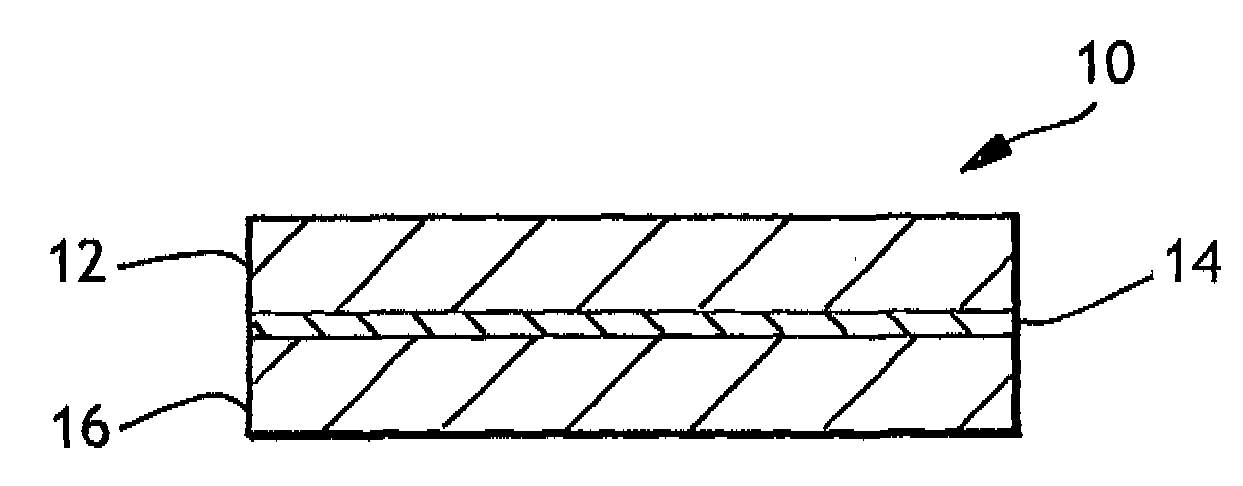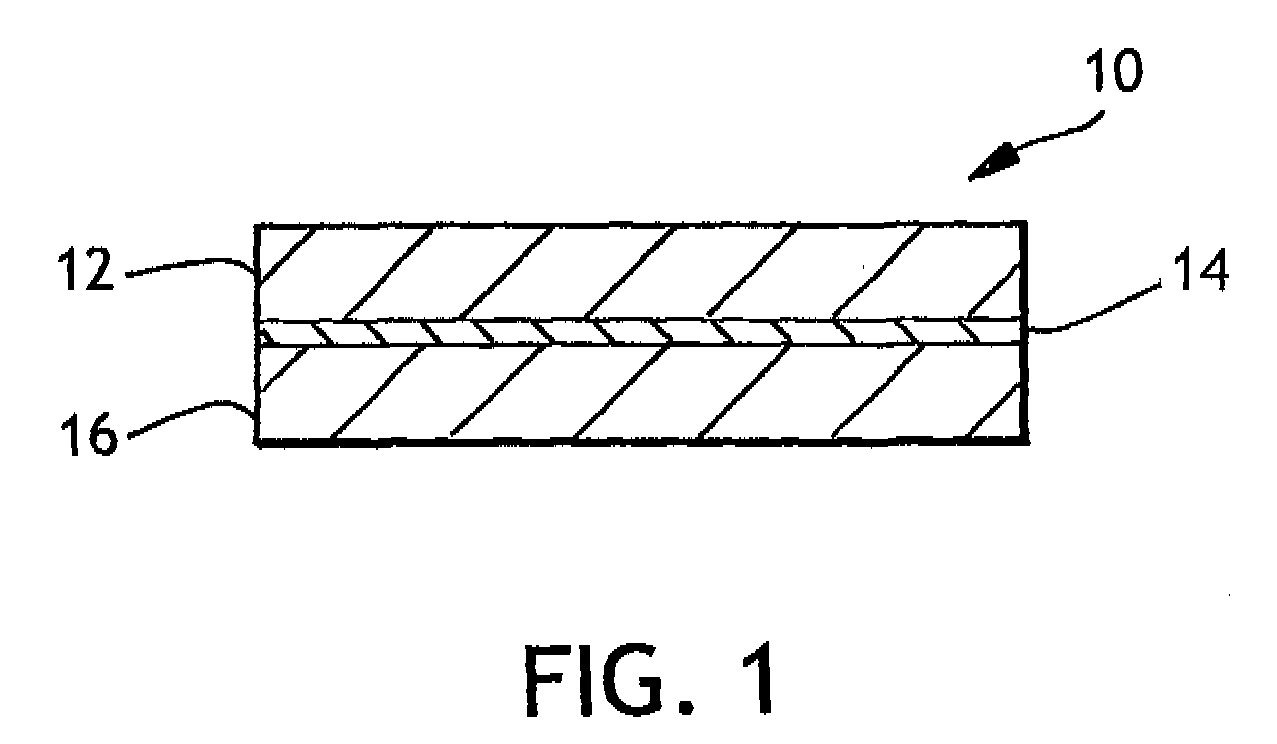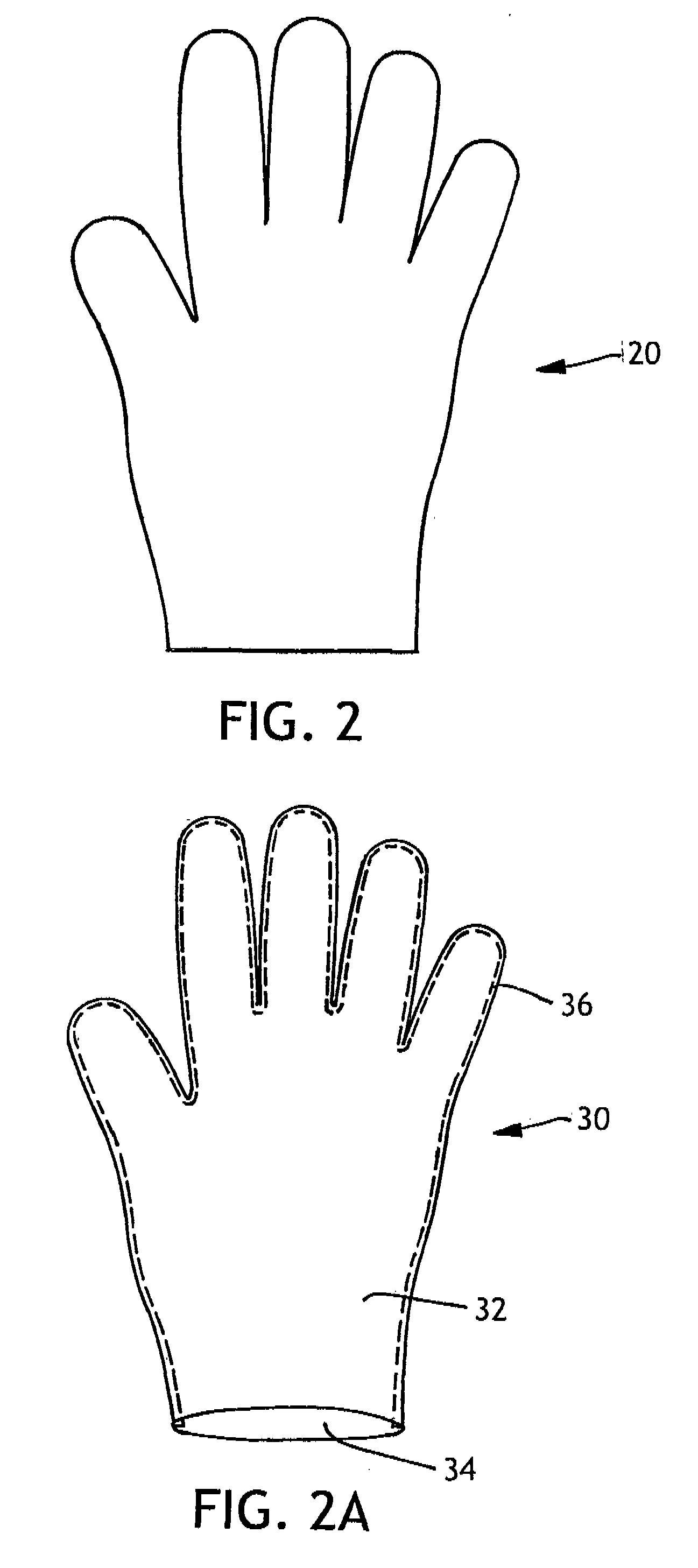Formulations having improved compatibility with nonwoven substrates
a nonwoven and elastomeric technology, applied in the field of nonwoven and elastomeric substrates, can solve the problems of substrate loss, rough feeling when used on the consumer's skin, and affecting the overall integrity of the elastomeric properties of the nonwoven web, so as to improve skin feel and overall aesthetics, improve skin health and hygiene, and improve skin health. the effect of skin health
- Summary
- Abstract
- Description
- Claims
- Application Information
AI Technical Summary
Benefits of technology
Problems solved by technology
Method used
Image
Examples
example 1
[0124]In this Example, various formulations were applied to a spunbond-film-spunbond laminated article. The degree of compatibility of the formulations and article were then determined.
[0125]The laminated article sample (140 gsm) was made by sandwiching an elastomeric film substrate between two 50% necked spunbond nonwoven substrates of 0.75 osy each. The elastomeric film layer was comprised of 96% by weight Vistamaxx™ 1100 resin (commercially available from ExxonMobil, Houston, Tex.) and 4% by weight SCC 11692, which is a filler compound available from Standridge Color Corp. (Social Circle, Ga.), which contains calcium carbonate blended with polypropylene and polypropylene random copolymers. The substrates were thermally point bonded together with the film layer in an extended state, and the resulting composite sample was allowed to retract to give a 3-D texture.
[0126]The outer nonwoven layers were formed from a thermoplastic composition that contains at least one copolymer of prop...
example 2
[0133]In this Example, various formulations were applied to a vertical filament laminated substrate. The degree of compatibility of the formulations and article were then determined.
[0134]The laminated article sample (112 gsm) was made by laminating elastomeric filaments extruded from molten elastomeric polymer pellets (commercially available as Triblock (Kraton® MD6688) from Kraton Polymers, LLC (Houston, Tex.)) between two polypropylene spunbond substrate layers, 14 gsm each. The layers were adhesively bonded using 2.5 grams / meter2 of a rubber based hot melt adhesive (available as H2808-07 from Bostik Incorporated, Wauwatosa, Wis.).
[0135]The various formulations shown in Table 3 were applied to the article samples using the method of Example 1.
TABLE 3LoadLoadRetainedRetainedfromLoad ValueOriginalfrom Water-Load atOriginalWater-Dielectricat 30%Loadtreated60%LoadtreatedConstant ofElongationStd.RetainedsubstratesElongationStd.RetainedsubstratesFormulationFormulation(gf / in)Dev.(%)(%)(...
example 3
[0136]In this Example, various formulations were applied to a 155 gsm elastomeric waistband material. The degree of compatibility of the formulations and article were then determined.
[0137]The elastomeric waistband material was made by laminating an elastomeric composite between two polypropylene spunbond layers of 14 gsm each. The elastomeric composite comprised elastomeric filaments extruded from molten elastomeric polymer pellets (commercially available as KRATON® MD6673 from Kraton Polymers, LLC of Houston, Tex.) and an elastomeric web of meltblown fibers extruded from molten elastomeric polymer pellets (commercially available as KC8020 from Bayshore Industrial of La Porte, Tex.), a blend of 80% AFFINITY EG8185 (Dow Chemical) and 20% REGALREZ 1126 (Eastman Chemical).
[0138]The various formulations shown in Table 4 were applied to the article samples using the method of Example 1.
TABLE 4LoadLoadRetainedRetainedfromLoad ValueOriginalfrom Water-Load atOriginalWater-Dielectricat 30%L...
PUM
| Property | Measurement | Unit |
|---|---|---|
| elongation | aaaaa | aaaaa |
| elongation | aaaaa | aaaaa |
| dielectric constant | aaaaa | aaaaa |
Abstract
Description
Claims
Application Information
 Login to View More
Login to View More - R&D
- Intellectual Property
- Life Sciences
- Materials
- Tech Scout
- Unparalleled Data Quality
- Higher Quality Content
- 60% Fewer Hallucinations
Browse by: Latest US Patents, China's latest patents, Technical Efficacy Thesaurus, Application Domain, Technology Topic, Popular Technical Reports.
© 2025 PatSnap. All rights reserved.Legal|Privacy policy|Modern Slavery Act Transparency Statement|Sitemap|About US| Contact US: help@patsnap.com



